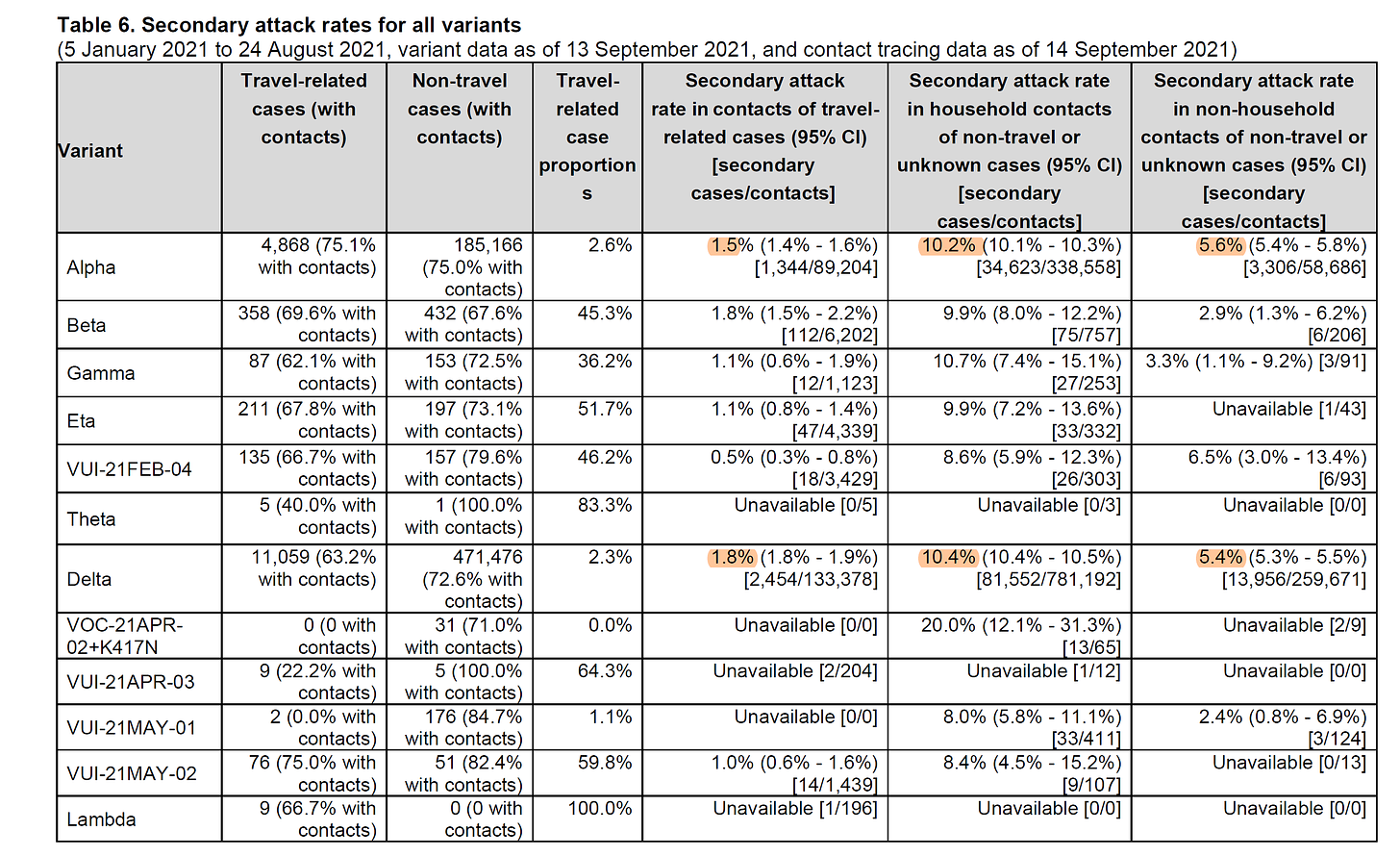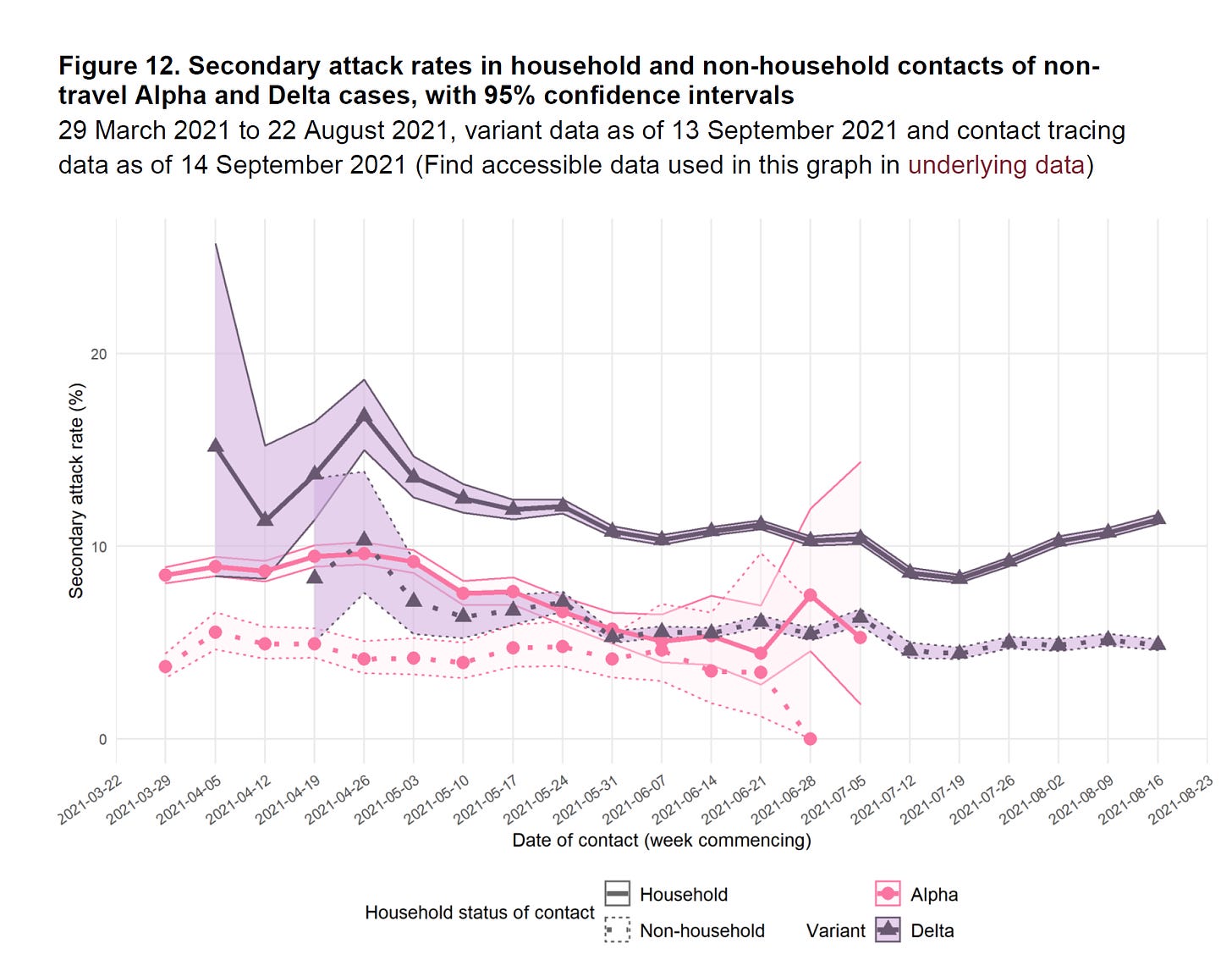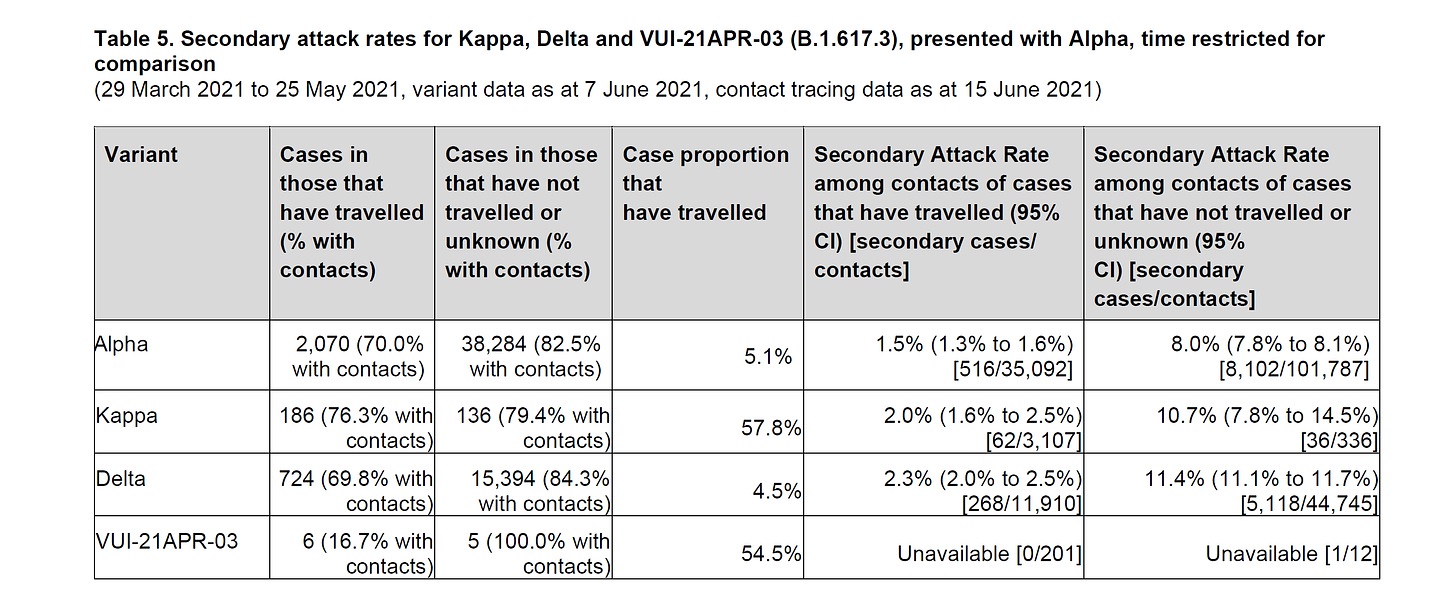is delta more contagious than other variants? (and if so, to what extent)
a look a the UK data and some questions
based on the most recent UK variants of concern report (HERE) it looks like the secondary attack rate (SAR) of delta is basically indistinguishable from alpha.
(secondary attack rate is the chance you’ll catch the virus from significant exposure to someone who has it)
this would seem to imply that it’s not any more contagious than alpha when you aggregate this whole time period.
this does not appear to be a function of vaccines as CFR for delta has trended up post vaccination programs and vaccines appear to be showing negative VE on cases in the UK.
this negative VE seems to have some interesting consonance with the fact that the SAR of delta is actually rising recently.
also note that this chart ends in mid august, so the SAR does not align with the chart above, perhaps because it went back down or perhaps because this is a different measure and is a time slice, not an aggregate.
because alpha is not showing up enough to measure well, they seem to have stopped the series. (also note that the error range on alpha has blown out)
it may also be seasonal with SAR rising as conditions become better for spread.
i’m really not sure how to read the variance on these 2 presentations of the data and upon which to rely.
i’m curious: has anyone dug into this? would be grateful for info on how to best interpret it.
but this discussion confirms that delta CFR is rising and is currently about where it was in june.
when we go back to june’s VoC briefing we see this:
from this, it seems quite clear that delta was more contagious. 2.3% vs 1.5% (53% higher SAR) and 11.4% vs 8% (42% higher SAR)
but looking at the newest report, they look indistinguishable.
10.4% vs 10.2% and 5.4% vs 5.6%.
(note that these are not exactly the same measure and so may not be directly comparable in terms of trends in variants, they merely provide a variant to variant comparison.)
so i’m honestly not entirely sure how to read this and what it means.
would love some input if folks have come across answers here and have seen or done analyses of this issue.
it seems like a very useful piece of the puzzle if we can sort it out.
thanks.









I wish I could help you, cat. All I know is from listening to docs I trust who work in ICU and in watching the hospitalization numbers, including numbers in ICU and deaths in my own area. In my area, younger people are indeed being hospitalized in greater numbers and some are critically ill and have been placed on a ventilator, though we know that’s usually the wrong choice. Deaths have ticked up steadily too over the last month to month and a half. Delta’s greater contagiousness, if that is true, could alone explain the increased hospitalizations since they seem to be getting much sicker much faster due to high viral loads perhaps. People were getting badly symptomatic on day 8-10 last year, now it’s moved down to day 4-5 where they are progressing to low oxygen levels. Kory and Marik corroborate that younger and younger people are being affected, likely due to those higher viral loads impacting them sooner. Anyway, as a retired ICU nurse and then an NP in internal medicine for a total of 34 years, something is definitely different with these variant, no question about it.
I do recommend you watch this interview of Vanden Bossche and Malone conducted by Philip McMillan of Vejon Health. It's long (~2 hours), but it make give insight. For example, Vanden Bossche has a theory as to why the case rate in the UK is hovering on a high plateau (also seen in Israel) that may play a role in the rising delta CFR.
https://www.facebook.com/162851011009411/videos/871272056853663
https://ourworldindata.org/coronavirus/country/united-kingdom
https://ourworldindata.org/coronavirus/country/israel
Thanks for all you do.